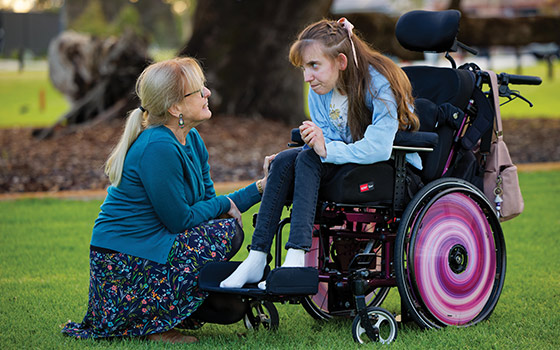Search
Research
Early determinants of fractures in Rett syndromeThe goals were to compare the fracture incidence in Rett syndrome with that in the general population and to investigate the impact of genotype, epilepsy,...
Research
Lost in translation: translational interference from a recurrent mutation in exon 1 of MECP2Rett syndrome (RTT) is an X linked neuro-developmental disorder affecting mostly girls. Mutations in the coding region of MECP2 are found in 80% of classic...

The Quality of Life Inventory - Disability
Research
Exploring quality of life in individuals with a severe developmental and epileptic encephalopathy, CDKL5 Deficiency DisorderCDKL5 Deficiency Disorder (CDD) is a rare genetic disorder caused by a mutation in the cyclin-dependent kinase-like 5 (CDKL5) gene. It is now considered to be a developmental and epileptic encephalopathy because of the early onset of seizures in association with severe global delay. Other features include cortical visual impairment, sleep and gastro-intestinal problems. Progress in clinical understanding, especially regarding the spectrum of functional ability, seizure patterns, and other comorbidities was initially slow but accelerated in 2012 with the establishment of the International CDKL5 Database (ICDD). Our aim was to use this data source to investigate quality of life (QOL) and associated factors in this disorder.
Research
Implementing telehealth support to increase physical activity in girls and women with Rett syndrome-ActivRett: protocol for a waitlist randomised controlled trialIndividuals with Rett syndrome (RTT) experience impaired gross motor skills, limiting their capacity to engage in physical activities and participation in activities. There is limited evidence of the effectiveness of supported physical activity interventions. This study aims to evaluate the effects of a telehealth-delivered physical activity programme on physical activity, sedentary behaviour and quality of life in RTT.
Research
Hospital admissions in children with developmental disabilities from ethnic minority backgroundsChildren with CP and intellectual disability, particularly from minority backgrounds, were at higher risk of being admitted to hospital after the first year of life
Research
Predicting Long-Term Survival Without Major Disability for Infants Born PretermApgar score, birth weight, sex, socioeconomic status, and maternal ethnicity, in addition to gestational age, have pronounced impacts on disability-free survival.
Research
Data Linkage: Canadian and Australian Perspectives on a Valuable Methodology for Intellectual and Developmental Disability ResearchBuilding data linkage capabilities, and how linked databases can be used to identify persons with IDD and used for population-based research
Research
A framework for understanding quality of life domains in individuals with the CDKL5 deficiency disorderThis study aimed to identify the quality of life domains important for individuals with CDKL5 deficiency disorder
Research
Apgar score and risk of autismThis study suggests that low Apgar score is associated with higher risk of autism spectrum disorder, and in particular autistic disorder
